COAMWELD: Advanced metal parts through optimal combination of additive manufacturing and welding techniques - Results
Summary project results
The project is divided into the following work packages:
- Analysis and benchmarking of additive process technologies
- Analysis and benchmarking of joining technologies
- Technical specifications for the generic research
- Research of additively manufactured workpieces
- Development of joining concepts
- Quality assessment of joints
- Demonstration parts
- Dissemination of results
1. Analysis and benchmarking of additive process technologies
In WP1, available AM technologies were reviewed and analysed. In a first phase, an overview of currently available AM techniques was made based on literature and other sources (manufacturers, personal contacts, reports). This included an assessment of the current status of these AM techniques (the TRL level). A report on this was prepared (deliverable D1.1) , describing which AM processes are currently in industrial use and which processes are still in the research phase. These results were used to choose the AM processes to be investigated in WP2. Specific information was collected that will help the welding research.
2. Analysis and benchmarking of joining technologies
A similar task was carried out for the welding processes (WP2). Available techniques were evaluated to identify potentially viable joining technologies. Initially, this was done based on the available knowledge and experience present at the BIL, SLV-MC, SLV-BB and TUM. Consultations were held with the German partners who have more experience in laser and friction stir welding. A list of potentially useful welding techniques was drawn up, taking into account the availability and use of the processes in the industry. Exotic or little-used welding processes were thus not considered, but can be addressed for the development of company-specific projects.
3. Technical specifications for the generic research
Based on this list, a survey was organised among the guidance group in Belgium and Germany to gather the necessary input for the further elaboration of WP2 and 3. This survey was used to detail all the technical specifications for the generic studies. The questions asked were:
- Q1: What additive manufacturing processes do you use or wish to use?
- Q2: In what materials are your AM workpieces made?
- Q3: To what conventional materials should the AM workpieces be welded?
- Q4: What welding processes are you considering?
- Q5: What is the shape and dimensions of the part?
- Q6: What is the welding configuration?
- Q7: What is the application?
Based on this, the AM processes to be investigated were selected. The following AM processes are considered in the project:
- DED-Arc (WAAM)
- PBF-LB (powder bed process via laser - SLM)
- DED-LB (energy deposition via laser beam)
- PMD (Plasma Metal Deposition with powder or wire)
The AM materials to be investigated are:
- Steel: AWS ER 70S-6 carbon steel,
- AISI 316L stainless steel,
- HC380LA (higher strength micro-alloyed steel)
- Aluminium (AA 5183 for WAAM and AlSi10Mg for PBF-LB).
As for the welding processes to be investigated, the following choice was made:
- MIG/MAG (manual and robotised),
- TIG,
- plasma welding,
- laser welding,
- friction welding,
- friction stir welding (FSW),
- resistance and friction spot welding.
The arc welding processes chosen are processes widely used in industry. The above choice does not exclude other processes or materials from being investigated during the further course of the project.
Based on the above information and the available standards for conventional welding of the specified materials, an investigation plan was composed. This specified: the welding geometry, the shape and dimensions of the test pieces, the tests to be carried out, and the acceptance criteria. All this was composed on the basis of the standards in force for welding conventional workpieces.
Two welding configurations were chosen to carry out the generic examination: butt joints of tubes and plates. In addition, a limited number of welding tests were also carried out with overlap joints (processes: resistance and friction spot welding).
4. Examination of additively manufactured workpieces
In WP4, the AM parts were manufactured, based on the processes and materials defined in WP3. This was realised in 3 ways:
- Self-produced AM workpieces realised at the scientific partners in Belgium and Germany,
- Supplied AM workpieces by the guidance committee. During the survey, the question was also asked whether companies could supply AM workpieces with which to carry out welding tests. This question was also sent out by FLAM 3D, who surveyed their members. This way of working gave the advantage that we could work with the workpieces of the participating companies, which also made them more involved in the research.
- Purchased AM workpieces: PBF-LB (SLM) pieces were purchased from a company from the (Flemish) guidance committee.
5. Development of joining concepts
In WP5, a generic experimental investigation of the factors that determine the desired joining properties was carried out. The selected materials were welded using the different welding processes in order to :
- investigate the feasibility,
- investigate the joining properties to be achieved with the different processes,
- benchmark the capabilities of the joining processes.
- The aim is to determine the scope of application of each welding process for joining AM parts.
The following material combinations were investigated. For all welds performed, the tests specified in standard ISO 15614-1 & 2 were always carried out. This included a metallographic examination, together with hardness measurements, and tensile and bending tests.
Joining of plates in WAAM 308LSi (Test series 1 & 2)
Material combinations:
- AM 308LSi + conv. AISI 304L
- AM 308LSi + conv. S355
Welding processes:
- Manual TIG welding
- Manual MAG welding
- Robotised MAG welding
Status (Oct. 2023):
- Experimental study finalised
- Reporting is ongoing
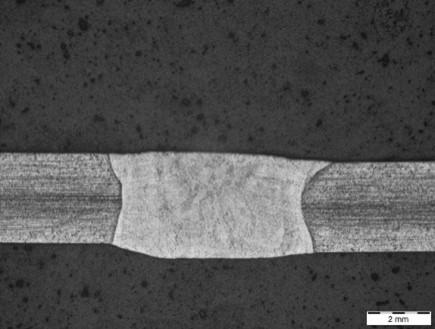
Material combination: WAAM 308LSi + AISI 304L
Joining of plates in WAAM ER7Os-6 V2L5 (Test series 3)
Material combinations:
- AM ER70 + conv. S355
- AM ER70 + conv. 316L
- Conv. 316L + conv. S355
Welding processes:
- Manual TIG welding
- Manual MAG welding
- Robotic MAG welding
- Robotic plasma welding
Status (Oct. 2023):
- Robotic MAG and plasma welding is being completed
- Reporting is ongoing
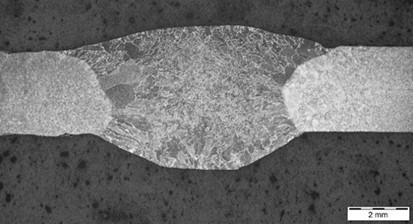
Material combination: WAAM ER70S-6 + S355
Joining of plates in WAAM AA5183 (Test series 8)
Material combinations:
- AM 5183 + conv. AA 5083
- Conv. 5083 + conv. 5083
Welding processes:
- Manual TIG welding
- Manual MIG welding
Status (Oct. 2023):
- Experimental study finalised
- Reporting is ongoing

Material combination: WAAM AA 5183 + AA 5083
Joining of plates in PBF-LB AISI 316L (Test series 9)
Material combinations:
- AM 316L + conv. 316L
- Conv. 316L + conv. S355
Welding processes:
- Manual TIG welding
- Manual MAG welding
- Robotic MAG welding
- Robotic Plasma welding
- Laser welding
Status (Oct. 2023):
- Robotic MAG and plasma welding is being completed
- Reporting is ongoing
Publications :
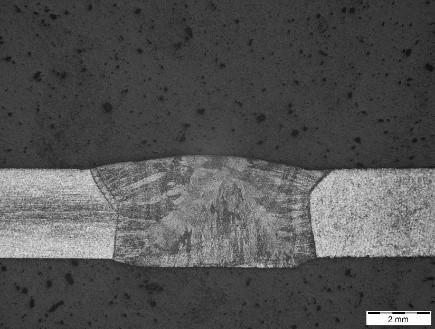
Material combination: L-PBF 316L + 316L
Joining of plates in PBF-LB AlSi10Mg (Test series 18-24)
Material combinations:
- Conv. 5083 + Conv. 5083
- Conv. 5083 + PBF-LB AlSi10Mg
- Conv. 5083 + WAAM 5183
Welding processes:
- Manual TIG welding
- Manual MIG welding
- Laser welding
- Robotic plasma welding
- Friction stir welding
Status (Oct. 2023):
- MIG, TIG and laser welding finished
- Friction stir and plasma welding ongoing
- Further research needed to improve welding properties for arc welding of AlSi10Mg
- Research on reducing porosities
- Reporting is ongoing
Publications :
- A Review on the Weldability of Additively Manufactured Aluminium Parts by Fusion and Solid-StateWelding Processes
- The Influence of the Filler Metal Quality in the MIG Welding of AlSi10Mg Parts Additively Manufactured by L-PBF Process
- Weldability Investigation of Additively Manufactured Al Alloy Parts by GMAW Welding Process: Influence of Filler Metal Quality and Laser Cleaning Prior to Welding
- Improving the Weldability of PBF-LB Manufactured AlSi10Mg Components by Solid-State Welding Process
- Lassen van additief vervaardigde materialen (MetaalVAK)
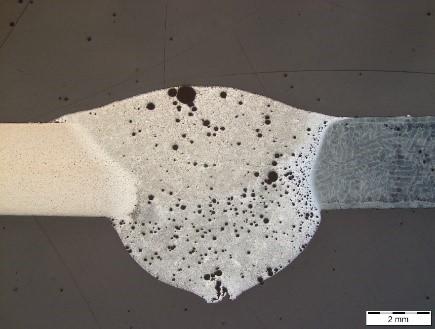
Material combination: L-PBF AlSi10Mg + AA 5083
Joining of tubes in PBF-LB AlSi10Mg (Test series 12)
Material combinations:
- AM AlSi10Mg + conv. 5083
- Conv. 5083 + conv. 5083
Welding processes:
- manual TIG welding,
- rotational friction welding
Status (Oct. 2023):
- TIG and friction welding trials completed
- Further research needed to improve weld properties for arc welding of AlSi10Mg
- Reporting in progress.
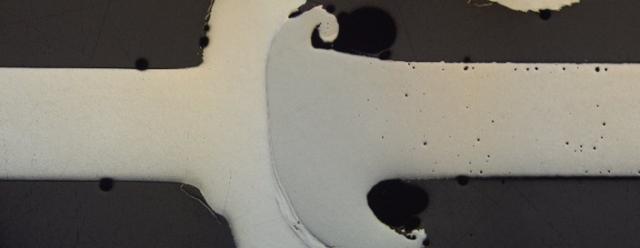
Material combination: L-PBF AlSi10Mg + AA 5083
Joining of tubes in PBF-LB HC380LA (Test series 13)
Material combinations:
- AM HC380LA + conv. E355
- AM HC380LA + AM HC380LA
Welding processes:
- Manual TIG welding
- Manual MAG welding
- Laser welding
- Plasma welding
- Rotational friction welding
Status (Oct. 2023):
- All welding tests completed, except plasma welding
- Reporting in progress.
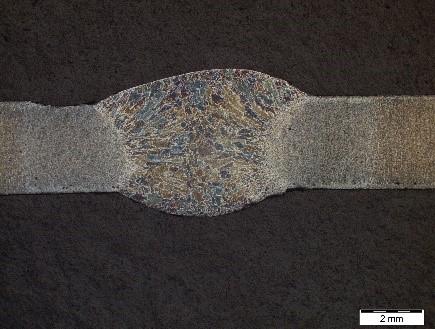
Material combination: L-PBF HC380LA + L-PBF HC380LA
Joining of tubes in PBF-LB HC380LA (Test series 14)
Material combinations:
- AM HC380LA + AM HC380LA
- AM HC380LA + conv. HC380LA
Welding processes:
- Manual TIG welding
- Manual MAG welding
- Laser welding
- Plasma welding
Status (Oct. 2023):
- All welding tests completed, except plasma welding
- Reporting in progress.
Publications
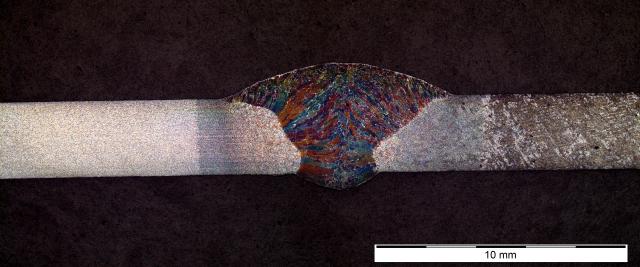
Material combination: L-PBF HC380LA + Conv. HC380LA
Joining of plates in PBF-LB 316L (Test series 27)
Material combinations:
- Conv. 316L + conv. 316L
- AM 316L + conv. 316L
Weldig processes:
- Robotic MAG welding
- Laser welding
- Robotic plasma welding
Status (Oct. 2023):
- Welding trials to start soon
Joining of plates in DED-LB 316L (with wire) (Test series 28)
Material combinations:
- Conv. 316L + conv. 316L
- AM 316L + conv. 316L
Welding processes:
- Robotic MAG welding
- Laser welding
- Robotic plasma welding
Status (Oct. 2023):
- Welding trials to start soon
Joining of plates in WAAM 316L (Test series 29)
Material combinations:
- Conv. 316L + conv. 316L
- AM 316L + conv. 316L
Welding processen:
- MAG welding
- Plasma welding
Status (Oct. 2023):
- Welding trials to start soon
6. Joint quality assessment
In WP6, the joint properties are examined using different destructive and non-destructive testing methods.
